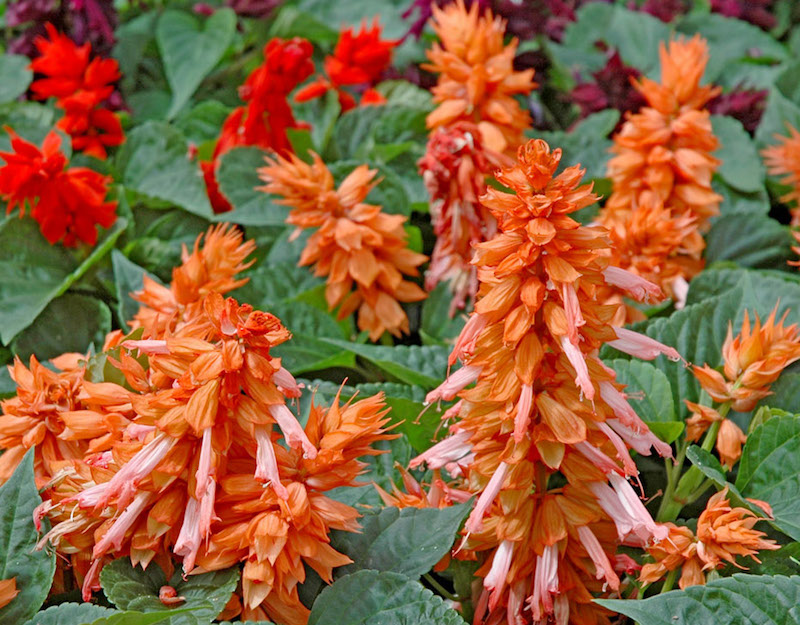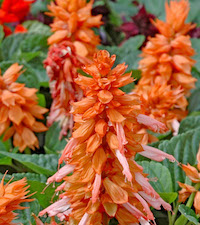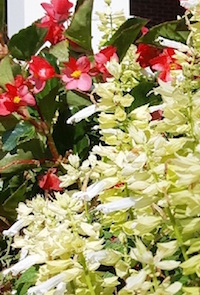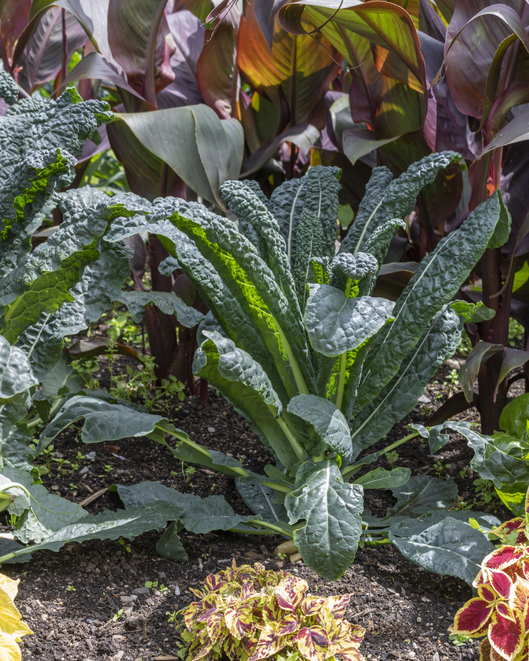It has been well over a decade since I have written about the scarlet sage, and yet this year, it seems like I am discovering an old friend. I think you should, too. It is like this plant I grew up loving had disappeared, but in truth, while I have been growing other flowers, the scarlet sage has simply gotten better.
There is a good chance that you have forgotten about this plant. If you are under 30, there is a very good chance it is totally unknown to you. To get started, know that scarlet sage is our annual salvia, known botanically as “Salvia splendens.” I say “annual” because that is how most of us treat it. In Florida, you’ll find some people growing it as a perennial.
New colors and varieties will ensure a dazzling landscape or a sizzling mixed container for the whole gardening season. One group that you will probably find new to you is the Saucy series. ‘Saucy Wine’ and ‘Saucy Red’ have both found fame in the Southern Living Plant Collection. ‘Saucy Coral’ looks as though it was designed with the artist gardener in mind, with one of the rarest colors in the gardening world.
The Saucy series is fairly large, growing 2 to 3 feet tall and 2 to 3 feet wide. You’ll find that all of the Salvia splendens do their part to bring in hummingbirds and butterflies. Because of their height, the Saucy series also makes great cut flowers. Deadheading simply brings more flowers throughout the summer.
The Vista series is another group that I have always liked. These are more compact, reaching only 1 foot in height and 8 to 10 inches in width. The Vista series comes in six colors and a mix. My color-designer son seems to always make sure white flowers are part of his mixes, and this year, I have to say that the ‘Vista White’ has been extraordinary. Here we are in September, and his mixed planters featuring ‘Vista White’ are amazing.
The Picante, Salsa and Sizzler series are also compact when compared to the Saucy series. They have so many colors, you’ll question why they are called “scarlet sage.” They originated in Brazil, so the marketing or varietal names are certainly appropriate.
Color from spring through frost means that this annual form of salvia is an exceptional buy and ranks as a stalwart performer. Its spiky texture is most welcome in a garden world dominated by round flowers.
The ideal site would get morning sun and midafternoon shade. The soil should be very well drained. Plant on raised beds, or amend heavy soils with the addition of compost or humus. Plant hardiness zones 8 through 10 may find these to be returning perennials with superior drainage.
While preparing the soil, incorporate 2 pounds of a slow-release, 12-6-6 fertilizer or something balanced per 100 square feet of planting area. Space the plants 10 to 12 inches apart, planting at the same depth they are growing in the container.
Water deeply, once a week, particularly during long, dry periods. In the Savannah, Georgia, area, we have had the fourth-driest summer in a dozen years. On the other hand, we have had the second-wettest summer in terms of frequency of rain. This has been just about perfect for most of our annuals.
Adding a good layer of mulch will reward the gardener with happier plants by keeping the root zone cooler and the moisture from quickly evaporating. Prune spent flowers to encourage branching and blossoms. This will be especially important for your late summer and fall display. Feed a month after planting with a light application of fertilizer.
Scarlet sage comes in almost any color, including two-toned varieties, so it helps to know your color combinations. I have loved my son’s mixed container of ‘Saucy Coral’ with ‘Black and Bloom’ salvia and bright ‘Sidekick Lime’ ornamental sweet potatoes. And the others planted with ‘Vista White’ seem to complement all other colors. Don’t be afraid to use white. It is super as the sun sets, and the color even reflects moonlight at night.
Hummingbirds, butterflies and dazzling beauty are pretty good attributes for scarlet sage. It will give you a sense of "green-thumb satisfaction."
Follow me on Twitter @CGBGgardenguru and learn more about the UGA Coastal Botanical Garden at the Historic Bamboo Farm at coastalgeorgiabg.org.









